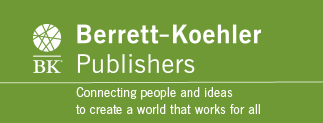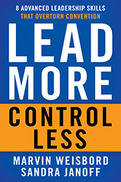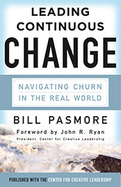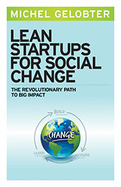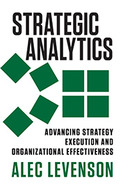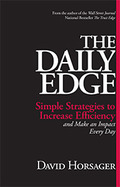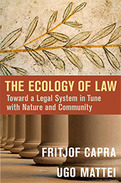Search Results: ""
Results 763-768 of 1358
Unleash Commitment, Initiative, and Innovation
In their decades of leading groups all over the world, Marvin Weisbord and Sandra Janoff discovered they could get superior results by creating an unconventional approach to leadership. Leaders still need to get everyone aligned around the same goals. But to maximize energy, creativity, and productivity, they gain more by focusing on structure rather than behavior, enabling people to take responsibility and manage themselves.
Lead More, Control Less describes eight essential skills for establishing a culture of autonomy and self-leadership. Using examples and case studies, Weisbord and Janoff describe how leaders can share responsibility, defuse group conflicts, show everyone the big picture, and more. With this approach, leaders truly gain more control by giving it up.
In their decades of leading groups all over the world, Marvin Weisbord and Sandra Janoff discovered they could get superior results by creating an unconventional approach to leadership. Leaders still need to get everyone aligned around the same goals. But to maximize energy, creativity, and productivity, they gain more by focusing on structure rather than behavior, enabling people to take responsibility and manage themselves.
Lead More, Control Less describes eight essential skills for establishing a culture of autonomy and self-leadership. Using examples and case studies, Weisbord and Janoff describe how leaders can share responsibility, defuse group conflicts, show everyone the big picture, and more. With this approach, leaders truly gain more control by giving it up.
Change has become constant, complex, multifaceted, and overwhelming. To meet this challenge, Bill Pasmore presents four keys to help leaders decide where and how to most effectively focus their change initiatives.Most change efforts fail because most change methods are built to deal with single challenges in a nice, neat, linear way. But leaders know that today, pressures for change don't come at you one at a time; they come all at once. It's like riding a roller coaster: sudden drops, jarring turns, anxious climbs into the unknown. Drawing on his years of experience at the Center for Creative Leadership and Columbia University, Bill Pasmore offers a four-part model and four mindsets that allow leaders to deal with multiple changes simultaneously without drowning in the churn.
The first step, Pasmore says, is to Discover which external pressures for change are the most necessary to address. The key here is to think fewer-step away from the buffet of possibilities and pinpoint the highest-impact options. Then you need to Decide how many change efforts your organization can handle. Here the mindset is to think scarcer-you have only so many people and so many resources, so how do you best use them? Once you've figured that out, it's time to Do-and here you want to think faster. Streamline processes and engage in rapid prototyping so you can learn quickly and cost-effectively. The last step is to Discern what worked and what didn't, so think smarter-develop metrics, identify trends, and make sure learnings are disseminated throughout the organization.
For each stage of the process, Pasmore offers detailed advice, practical tools, and real-world examples. This book is a comprehensive guide to navigating change the way it happens now.
The first step, Pasmore says, is to Discover which external pressures for change are the most necessary to address. The key here is to think fewer-step away from the buffet of possibilities and pinpoint the highest-impact options. Then you need to Decide how many change efforts your organization can handle. Here the mindset is to think scarcer-you have only so many people and so many resources, so how do you best use them? Once you've figured that out, it's time to Do-and here you want to think faster. Streamline processes and engage in rapid prototyping so you can learn quickly and cost-effectively. The last step is to Discern what worked and what didn't, so think smarter-develop metrics, identify trends, and make sure learnings are disseminated throughout the organization.
For each stage of the process, Pasmore offers detailed advice, practical tools, and real-world examples. This book is a comprehensive guide to navigating change the way it happens now.
For years, the lean startup has been revolutionizing both new and established businesses. In this eye-opening book, serial social entrepreneur Michel Gelobter shows how it can do the same for nonprofits.
Traditionally, whether creating a new business or a new program, entrepreneurs in all sectors develop a plan, find money to fund it, and pursue it to its conclusion. The problem is, over time conditions can change drastically—but you're locked into your plan. The lean startup is all about agility and flexibility. Its mantra is “build, measure, learn”: create small experimental initiatives, quickly get real-world feedback on them, and use that data to expand what works and discard what doesn't.
Using dozens of social sector examples, Gelobter walks you through the process. The standard approach wastes time and money. The lean startup will help your organization vastly increase the good it does.
Traditionally, whether creating a new business or a new program, entrepreneurs in all sectors develop a plan, find money to fund it, and pursue it to its conclusion. The problem is, over time conditions can change drastically—but you're locked into your plan. The lean startup is all about agility and flexibility. Its mantra is “build, measure, learn”: create small experimental initiatives, quickly get real-world feedback on them, and use that data to expand what works and discard what doesn't.
Using dozens of social sector examples, Gelobter walks you through the process. The standard approach wastes time and money. The lean startup will help your organization vastly increase the good it does.
Strategic Analytics
2015
More than ever, data drives decisions in organizations—and we have more data, and more ways to analyze it, than ever. Yet strategic initiatives continue to fail as often as they did when computers ran on punch cards. Economist and research scientist Alec Levenson says we need a new approach.
The problem, Levenson says, is that the business people who devise the strategies and the human resources people who get employees to implement them use completely different analytics. Business analytics can determine if operational priorities aren't being achieved but can't explain why. HR analytics reveal potentially helpful policy and process improvements but can't identify which would have the greatest strategic impact.
This book shows how to use an integrated approach to bring these two pieces together. Levenson presents a thorough and realistic treatment of the reasons for and challenges of taking an integrated approach. He provides details on the different parts of both enterprise and human capital analytics that have to be conducted for integration to be successful and includes specific questions to ask, along with examples of applying integrated analytics to address particular organizational challenges.
Effective analytics is a team sport. Levenson's approach allows you to get the deepest insights by bringing people together from both the business and HR perspectives to assess what's going on and determine the right solution.
The problem, Levenson says, is that the business people who devise the strategies and the human resources people who get employees to implement them use completely different analytics. Business analytics can determine if operational priorities aren't being achieved but can't explain why. HR analytics reveal potentially helpful policy and process improvements but can't identify which would have the greatest strategic impact.
This book shows how to use an integrated approach to bring these two pieces together. Levenson presents a thorough and realistic treatment of the reasons for and challenges of taking an integrated approach. He provides details on the different parts of both enterprise and human capital analytics that have to be conducted for integration to be successful and includes specific questions to ask, along with examples of applying integrated analytics to address particular organizational challenges.
Effective analytics is a team sport. Levenson's approach allows you to get the deepest insights by bringing people together from both the business and HR perspectives to assess what's going on and determine the right solution.
The Daily Edge
2015
Wall Street Journal bestselling author David Horsager frequently hears executives lament that their hands are more than full trying to balance the barrage of tasks they face on a daily basis. While he never set out to be a productivity expert, Horsager realized that over the years he has developed and adopted dozens of extraordinarily practical time- and energy-saving techniques that could help today's leader. The key objective is to become so effective in the little things that you have enough time for more meaningful interactions.
In The Daily Edge, you'll learn strategies such as identifying the key Difference-Making Actions on which to focus your efforts. Perhaps it is time to set a personal or even company-wide “power hour,” during which you do not attend meetings, answer the phone, or reply to emails, creating the time and space to really focus and get things done. The thirty-five high-impact ideas Horsager introduces in succinct, quick-read chapters are easily implemented and powerful on their own. Taken together, they form a solid wave of efficacy that enables you to get more done, keep your energy up, and make sure that you're able to honor all your relationships, both personal and professional.
In The Daily Edge, you'll learn strategies such as identifying the key Difference-Making Actions on which to focus your efforts. Perhaps it is time to set a personal or even company-wide “power hour,” during which you do not attend meetings, answer the phone, or reply to emails, creating the time and space to really focus and get things done. The thirty-five high-impact ideas Horsager introduces in succinct, quick-read chapters are easily implemented and powerful on their own. Taken together, they form a solid wave of efficacy that enables you to get more done, keep your energy up, and make sure that you're able to honor all your relationships, both personal and professional.
The Ecology of Law
2015
WINNER OF THE 2015 IBPA BENJAMIN FRANKLIN AWARD IN POLITICS/CURRENT EVENTS
The Ecology of Law
Fritjof Capra and Ugo Mattei argue that at the root of many of the environmental, economic, and social crises we face today is a legal system based on an obsolete worldview. Capra, a bestselling author, physicist, and systems theorist, and Mattei, a distinguished legal scholar, explain how, by incorporating concepts from modern science, the law can become an integral part of bringing about a better world, rather than facilitating its destruction.
This is the first book to trace the fascinating parallel history of law and science from antiquity to modern times, showing how the two disciplines have always influenced each other—until recently. In the past few decades, science has shifted from seeing the natural world as a kind of cosmic machine best understood by analyzing each cog and sprocket to a systems perspective that views the world as a vast network of fluid communities and studies their dynamic interactions. The concept of ecology exemplifies this approach. But law is stuck in the old mechanistic paradigm: the world is simply a collection of discrete parts, and ownership of these parts is an individual right, protected by the state. Capra and Mattei show that this has led to overconsumption, pollution, and a general disregard on the part of the powerful for the common good.
Capra and Mattei outline the basic concepts and structures of a legal order consistent with the ecological principles that sustain life on this planet. This is a profound and visionary reconceptualization of the very foundations of the Western legal system, a kind of Copernican revolution in the law, with profound implications for the future of our planet.
The Ecology of Law
Fritjof Capra and Ugo Mattei argue that at the root of many of the environmental, economic, and social crises we face today is a legal system based on an obsolete worldview. Capra, a bestselling author, physicist, and systems theorist, and Mattei, a distinguished legal scholar, explain how, by incorporating concepts from modern science, the law can become an integral part of bringing about a better world, rather than facilitating its destruction.
This is the first book to trace the fascinating parallel history of law and science from antiquity to modern times, showing how the two disciplines have always influenced each other—until recently. In the past few decades, science has shifted from seeing the natural world as a kind of cosmic machine best understood by analyzing each cog and sprocket to a systems perspective that views the world as a vast network of fluid communities and studies their dynamic interactions. The concept of ecology exemplifies this approach. But law is stuck in the old mechanistic paradigm: the world is simply a collection of discrete parts, and ownership of these parts is an individual right, protected by the state. Capra and Mattei show that this has led to overconsumption, pollution, and a general disregard on the part of the powerful for the common good.
Capra and Mattei outline the basic concepts and structures of a legal order consistent with the ecological principles that sustain life on this planet. This is a profound and visionary reconceptualization of the very foundations of the Western legal system, a kind of Copernican revolution in the law, with profound implications for the future of our planet.
